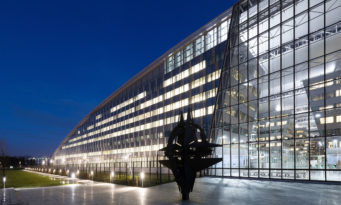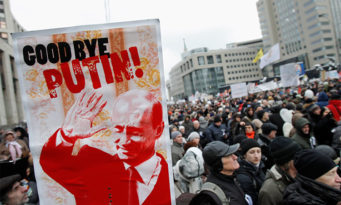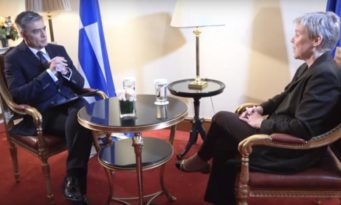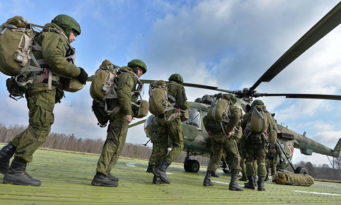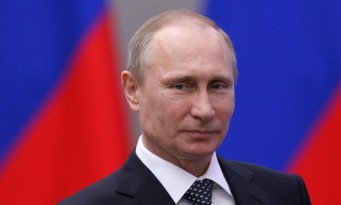What Russia won in Ukraine and what NATO learned
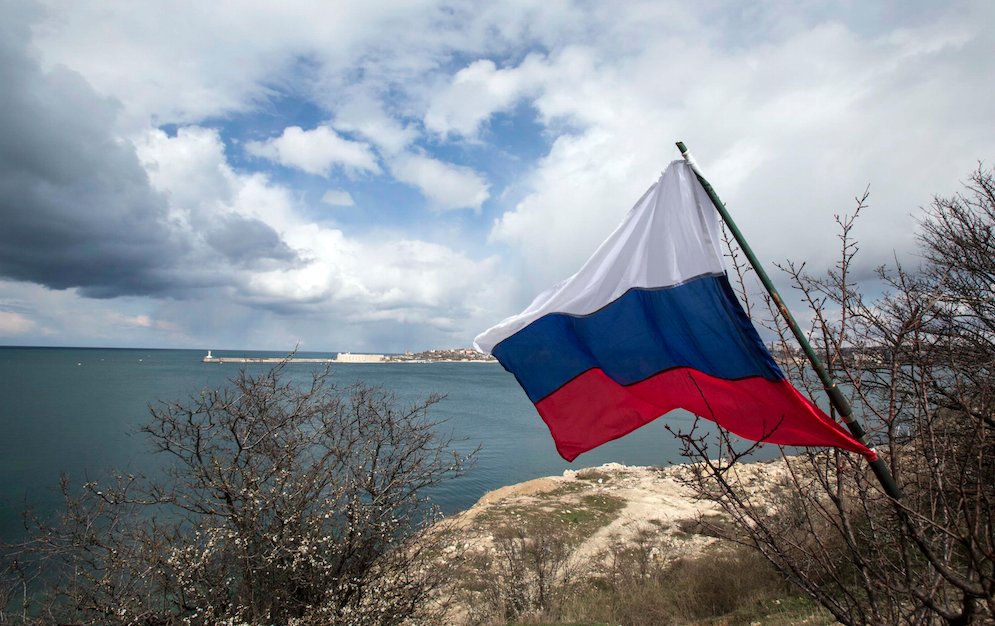
- By defencematters
A year ago Ukraine’s Crimea was annexed by Russia.Everything has changed and nothing is etched in stoneanymore.
by Andrej Matišák
Everything has changed and nothing is etched in stone anymore.
A year ago Ukraine’s Crimea was annexed by Russia. Russian planes are now buzzing around NATO’s airspace, American Strykes and Humvees are moving through the Baltics and Central Europe.
It’s not a new cold war, yet, but conflict or at least deep tensions, are visible. Russia's military doctrine explicitly sees major threats from NATO as President Vladimir Putin accused the West of trying to destabilize his country.
“The truth is what NATO does is a response to the aggressive actions we have seen by Russia in Ukraine,” NATO Secretary General Jens Stoltenberg told VOA in reaction to Moscow’s rhetoric. “We are doing that in a defensive and proportionate way, totally in line with all our international obligations.”
So what has Russia won in Ukraine? And what has NATO learned one year after the annexation of Crimea?
“The lessons for NATO are very clear. The alliance has learned that security in Europe is not preordained. Indeed, the entire geopolitical security situation in Europe has been upended. NATO is slowly realizing that it is not truly prepared for a crisis of this sort,” said John R. Deni, Research Professor of National Security Studies at the Strategic Studies Institute, U.S. Army War College. (His views do not necessarily reflect those of the U.S. Government).
John R. Deni previously worked for 8 years as a political advisor for senior U.S. military commanders in Europe. He thinks, referring also to the alliance’s mission in Afghanistan, that NATO has spent a decade or more training and structuring their military forces for counterterrorism and (or) stability operations, while necessarily letting its large-scale maneuver warfare capabilities atrophy somewhat.
“The alliance realizes it must increase readiness for hybrid conflicts, strengthening its maneuver warfare capabilities in particular - hence, the Readiness Action Plan, which includes the key VJTF initiative as well as the large-scale, high-visibility exercise to occur in 2015 and then every three years thereafter,” the American expert explained.
Research Fellow at International Centre for Defence and Security in Tallin Maksym Bugriy believes that it’s NATO that has been reacting to Russia’s actions. Not the other way round.
“One could argue, of course that the Crimean operation was motivated by seeming inconvenience in renting the Sevastopol base from the West-leaning and thus strategically unreliable neighbor, Ukraine. Yet, was the NATO threat in place at that time?“ asks Bugriy. “While presently, Russia turned itself into NATO's adversary and with Crimea, finds itself in a more vulnerable position than previously did without it. For example, Russian militarization of Crimea confronts the US forward presence, which by far exceeds the economic and military power Russia has,” said Bugriy.
According to expert on NATO Sean Kay, the alliance was able to find balance in response to Russia’s steps.
“NATO collectively has been very wise not to take Putin's bait, and over-react with military escalation - such as allies arming Ukraine and over-deploying into Eastern Europe. But NATO has taken very important symbolic steps to reassure new members at the same time,” said Kay, Professor at the Department of Politics and Government, Ohio Wesleyan University.
Kay believes that we see much more assertive and effective leadership among European leaders - on the diplomatic and economic end with France and Germany. “And also we see it in the military thinking with the new NATO spearhead force being made up mainly of Europeans,” said the author of the book “America's Search for Security”.
There are some small strategic gains for Russia related to the annexation of Crimea. Russia’s Black Sea fleet based at Sevastopol can operate without any limits, resulting in a bigger geopolitical influence for Moscow. So the question for NATO and members states like Turkey, Romania, and Bulgaria will be how to react on growing Russian naval influence in the region.
In March, NATO, has held a series of naval exercises in the Black Sea with warships from six NATO members states – the US, Canada, Turkey, Germany, Italy and Romania.
“Obviously the situation here is very unfortunate. And so coming here demonstrates that three NATO allies we have in the Black Sea – Turkey, Bulgaria and Romania – are very valuable members of the alliance. And it’s just as important that we come and train with them,” US Rear Admiral Brad Williamson was quoted by Euronews.
The fact is that NATO also faces some old dilemmas with Putin’s actions. Article 5 looks perfect on paper, but what is the threshold for using it.
“Of course there are now existential questions about whether states would really risk war with a nuclear nation over the Baltics,” explains Kay. “But that is not a new political and strategic challenge for the alliance, and given the relative threats at this stage, the response has been appropriately calibrated, and careful care given to the fact that consensus in the alliance is what gives it power - breaking that apart, for example with over-deployments in the Baltics, or arming Ukraine, would only play into Putin's narrative. NATO has gotten this right.“






